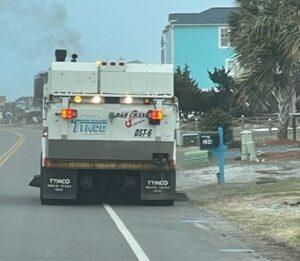Lou’s Views
“Unofficial” Minutes & Comments
BOC’s Public Hearing / Regular Meeting 05/20/25
Board of Commissioners’ Agenda Packet click here
Audio Recording » click here
BOC’s Public Hearing
THB Newsletter (04/23/25)
TOWN OF HOLDEN BEACH
PUBLIC HEARING NOTICE
May 20, 2025
Take notice that there will be a public hearing on Tuesday, May 20, 2025, beginning at 5:00 p.m. or shortly thereafter, in the Holden Beach Town Hall Public Assembly, 110 Rothschild Street, Holden Beach, NC 28462 to hear public comments on proposed Ordinance 25-05, An Ordinance Amending the Holden Beach Code of Ordinances, Section 157.006 Definitions, Ordinance 25-06, An Ordinance Amending the Holden Beach Code of Ordinances, Section 157.060 Residential District (R-1) and Ordinance 25-07, An Ordinance Amending the Holden Beach Code of Ordinances, Section 157.085 Relocation of Buildings.
All interested persons are invited to attend. Any person wishing to comment in writing should do so by submitting comments to Town Hall, 110 Rothschild Street, Holden Beach, NC 28462, Attention: Town Clerk, or heather@hbtownhall.com. Written comments must be submitted between the date of publication of this notice and 24 hours before the public hearing.
Public Hearing 05/20/25
- §157.006 / Parking Spaces
- §157.060 / Cargo Lift
- §157.085 / Relocation of Buildings
PUBLIC HEARINGS:
Ordinance 25-05, An Ordinance Amending the Holden Beach Code of Ordinances, Section §157.006 Definitions
Ordinance 25-06, An Ordinance Amending the Holden Beach Code of Ordinances, Section §157.060 Residential District (R-1)
Ordinance 25-07, An Ordinance Amending the Holden Beach Code of Ordinances, Section §157.085 Relocation Of Buildings
157.006 Definitions » click here
157.060 Residential District » click here
157.085 Relocation of Buildings » click here
Update –
The Public Hearing was held to hear comments on the three (3) proposed zoning changes.
1. Conflict of Interest Check
2024 Rules of Procedure for the Holden Beach Board of Commissioners
(e) Conflict Check. Immediately after the approval of the agenda, the Presiding Officer shall poll each member to disclose any potential conflicts of interest. In the event that a potential conflict is disclosed, the members will vote on a motion to allow or excuse that member with respect to the agenda item. If excused, the member may not participate in any discussion, debate, or vote with respect to the agenda item.
The Board was polled by Heather our Town Clerk. All of them declared that there was no conflict of interest with any agenda item at this meeting.
2. Discussion and Possible Action on Securing Bond Counsel and a Financial Advisor for a Possible Referendum – Scott Leo, Parker Poe & Andrew Carter, DEC Associates (Interim Town Manager Ferguson)
Agenda Packet – pages 20 – 28
ISSUE/ACTION REQUESTED:
Discussion and possible action on securing bond counsel and a financial advisor for a possible referendum.
BACKGROUND/PURPOSE OF REQUEST:
Following discussions in the budget workshops about potentially moving forward with a referendum for the pier rebuild, staff coordinated with our bond counsel and financial advisor. Bond counsel will be present to lead you through what would be involved in this process.
Bond Attorney and Financial Advisor Services
At the April meeting and at a subsequent budget workshop, there was a reference to a possible referendum regarding the pier. At the budget workshop, I stated I had been in contact with our financial advisor and bond attorney and there was a lengthier process involved than what had been discussed. Scott Leo, with Parker Poe, has prepared an engagement letter and included sample calendars with required actions for board consideration of entering this process. He will be available to answer questions.
Town of Holden Beach, North Carolina General Obligation Referendum
(Pier Project)
Scope of Engagement.
Our understanding is that the Town is considering holding a general obligation bond referendum for the authorization of the Bonds in either 2025 or 2026. As bond counsel, the Firm will provide certain legal services for the Bonds related to referendum process. Specifically, our services include:
- participation in meetings with Town staff and the Town Board of Commissioners, as required;
- preparation of various resolutions, bond orders and public hearing notices relating to the authorization of the referendum on the question as to whether to approve the issuance of the Bonds; and
- participation with the Local Government Commission in the approval of the Bonds;
If the voters of the Town approve the Bonds at the referendum and the Town proceeds to Issue the Bonds, the Town and the Firm will determine at that time the services to be rendered related to the issuance of the Bonds.
I would expect that the total costs for the referendum process would range from $25,000 to $30,000
DEC Associates Inc is a financial advisory firm based in Charlotte, NC, specializing in providing worry-free and fast digital or printed financial document services. With a commitment to accessibility, they offer 24/7 support to their clients, ensuring efficient handling of their financial needs.
As experts in their field, DEC Associates Inc assists clients in various financial matters, including the issuance of special obligation bonds. They work closely with reputable institutions like BofA Merrill Lynch and Parker Poe Adams Bernstein LLP to provide comprehensive financial advice and support. With a team of experienced professionals, DEC Associates Inc is dedicated to delivering reliable and efficient financial solutions to their clients.
HDR Executive Summary » click here
In summary, the overall condition of the existing fishing pier was assessed to be in POOR condition and HDR recommends replacing the timber superstructure in its entirety. The pier approach (superstructure and substructure) will also be required to be replaced in its entirety to satisfy federal ADA requirements. The existing substructure has many structural deficiencies which would require extensive repairs and is currently at the end of its useful service life. This coupled with the fact that the recommended construction methods would be similar for both repair and replacement options supports the conclusion that repairing the existing pier would not be structurally cost effective, nor would it provide the longevity or service life that results from replacing the timber fishing pier. Therefore, it is HDR’s recommendation that the Town of Holden Beach consider a pier replacement option only.
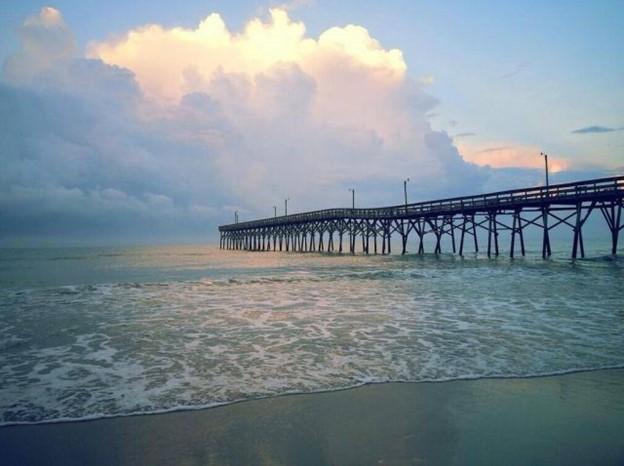
Update –
A presentation was made by Scott the Town’s bond counsel on a possible bond referendum to fund the pier project. He explained what a general bond obligation is, that is to issue debt for a capital project. Since we signed over the land rights of the pier property for grant money we have no collateral to borrow against. That said, the only viable financing option is a general obligation bond. The key is that we are pledging the taxing power of the town. In order to do that the taxpayers must approve the pledging of that taxing power therefore the referendum on the general election November ballot. The main issue with a referendum is that a majority of property owners are not registered to vote here and will not be able to participate. Unfortunately, the referendum is the only option that meets statuary requirements.at is We will need to state what we are doing the bond for and for how much money. There are very specific protocols that spell out the required actions the Board will need to take. He proceeded to walk them through the proposed calendar that they would need to adhere to. The statute tells us the prescribed language that is required to be put on the ballot. If the referendum is approved by the voters, the bond order will then need approval from North Carolina’s Local Government Commission. When the Town was pursuing the purchase of the pier property in 2022 we were told not come back and ask for more money for the pier and we told them that we wouldn’t but now we are going to have to ask for additional funding approval . The LGC typically tend to defer to the voters will. Voter-approved General Obligation bonds are pretty much the only viable way for us to get approval from the LGC to borrow money for funding a new pier. The town retains flexibility, as it is not obligated to issue bonds even if the referendum passes, and additional funding sources can supplement the pier project. We knew that paying for the pier was going to be challenging, if we want to move forward with a building a new pier this is what we have to do. Commissioner Thomas made a motion to secure bond counsel and a financial advisor and possible referendum for a pier rebuild and to move ahead with the second schedule in the agenda packet.
A decision was made – Approved (3-2)
Commissioners Smith and Dyer opposed the motion

Commissioners Smith and Dyer opposed the motion. The two (2) commissioners appear to oppose any and all proposals made by the three (3) new commissioners. The new Board members have taken a pragmatic approach to moving the pier project forward. We are at the point in the process where we need to determine how to pay for a new pier. Since the property is already obligated we have no collateral to borrow against. The only way we get LGC to approve the financing is with a referendum. The two (2) commissioners have been whining about getting the pier built. Yet they both voted against the only viable financing option to make that happen.
Holden Beach plans referendum to decide pier project’s future
The Holden Beach Board of Commissioners is planning to hold a referendum in November to let voters decide if they are willing to pledge their tax dollars to fund the cost of a new pier. During its May 20 meeting, the board voted 3-2 to secure the services of a bond counsel and financial advisor. The board may now move forward in the process of creating a bond order and referendum to fund the pier. “If we want a pier, we’re going to have to build a new one,” Commissioner Tracey Thomas said. “The only way we can do that is to take on debt.” Partner Scott Leo from the Parker Poe law firm in Charlotte attended the meeting to give an overview of the process and answer commissioners’ questions. He estimated the firm’s legal fees up to the date of the election will cost the town between $25,000 and $30,000. DEC Associates’ Director Andrew Carter, who attended the meeting remotely, said it will cost about $10,000 for financial advising. If the referendum is approved, there will be additional fees for further counsel and advising. Earlier this year, the board hired an engineering firm to assess the condition of the existing pier, which recommended that the pier be demolished and fully reconstructed. The firm, HDC Engineering, will provide an estimate of reconstruction costs prior to June 17, Interim Town Manager Christy Ferguson said. After receiving the estimated costs, the board will choose an amount for the general obligation bond. It must add a level of contingency funding to the estimate to determine the maximum principal balance of the bonds, which must be included on the ballot, Leo said. “I think paying for the pier is going to be challenging,” Commissioner Rick Paarfus said. “I mean, we’re probably going to have to borrow some money, and I think the bond route may be the most likely successful route.” The board will consult with Carter to determine how the town will fund the bonds. Discussions will include whether the bonds will require a tax increase, Carter said, as that information is legally required to be included on the ballot. If additional funding sources for the pier arise, the board can use those sources. Additionally, the town is not obligated to issue the bonds if approved, Leo said. “So basically, if we get this approved,” Paarfus said, “it becomes a financial tool we could deploy. We don’t have to. In other words, we can still go seek grants or other ways to fund this project.” When a town issues a general obligation bond, it pledges the full faith and credit of the taxing power of the town. The citizens must approve the pledging of that taxing power, hence the referendum. If approved, the board will have seven years to issue the bonds, Leo said. “You’re asking the voters, do you approve this bond order and authorize the town to issue up to this amount of bonds for this purpose?” Leo said. After deciding on a maximum principal amount and purpose for the bond order, the board must set and hold a public hearing. It may hold more than one, but North Carolina statute requires at least one. The draft calendar Leo presented at the board meeting set the hearing for Aug. 19. At the end of the future public hearing, the board will adopt the bond order and a resolution to set the referendum. Commissioners will then no longer be allowed to increase the amount of the bond, but it may decrease it, Leo said. Commissioner Rick Smith expressed concern about how the referendum would be received by the citizens. He recalled that when the town initially bought the pier, citizens warned the board not to come back around asking to borrow money. “At that time, we said, ‘Well, we’re going to start paid parking on the island, and that’s how we’re planning to finance it,’ ” Smith said. Smith and Commissioner Page Dyer voted against the motion to move forward with the bond counsel and financial advisor. Commissioner Tom Myers, Paarfus and Thomas voted for it. Myers called the motion a “no-regrets action,” stating that if the town moves forward with constructing the pier, it is an essential step. Dyer brought up the large portion of taxpayers who are not able to vote in Holden Beach and wanted to make sure that their input will be taken into consideration. “With the majority of people that might see a tax increase not being able to vote, certainly their information is going to have to be considered at a public hearing because they can’t vote,” Dyer said. If the referendum is approved by the voters, the bond order will then need approval from North Carolina’s Local Government Commission.
Read more » click here
 “At that time, we said, ‘Well, we’re going to start paid parking on the island, and that’s how we’re planning to finance it,’ ” Smith said.
“At that time, we said, ‘Well, we’re going to start paid parking on the island, and that’s how we’re planning to finance it,’ ” Smith said.
.
Frankly, that is not what was said. Paid parking was not meant to be the only revenue stream to pay for the pier property and pier repair. At no point was there any discussion about paid parking paying for a pier rebuild that will cost us millions of dollars. Commissioner Smith remarks that they use the paid parking revenue to finance the pier rebuild project is preposterous since paid parking revenue does not even cover the debt obligation to obtain the pier property. Aparently, a pier tear down and rebuild needs a different funding approach like a bond which he just voted against.
3. Update on Town Manager Recruitment Process from S. Renee Narloch – Town Clerk Finnell (Interim Town Manager Ferguson)
Agenda Packet – page 29
ISSUE/ACTION REQUESTED:
Update on Town Manager Recruitment Process with S. Renee Narloch
BACKGROUND/PURPOSE OF REQUEST:
Renee Narloch will attend via conference call to provide an update to the Board on the status of the town manager recruitment process and will answer questions on the process moving forward.
Update –
Renee via conference call provided an update on the Town Manager recruitment process. They have received forty-five (45) applications and are in the process of reviewing them. The Board agreed to schedule a Special Meeting/Executive Session on June 3rd at which time Renee will make recommendations of candidates to the Board. At that meeting they will review the candidates and then come to a consensus in order to narrow the field to just three (3) to five (5) candidates. On June 16th after the Budget Meeting, they will interview candidates for the position.
4. Police Report – Chief Jeremy Dixon
Agenda Packet – pages 30 – 35
Police Report » click here
Jeremy reviewed the actions that were taken by them last month
.
Business as usual, normal amount and type of activity for this time of year.
Public Service announcements
- Pets not allowed on the beach strand during the day ordinance is in effect
- Golf carts are considered a motor vehicle and subject to all laws, rules and regulations that govern motor vehicles
Staffing –
Chris Thompson was moved from part-time status to full-time status
John B has been given a conditional offer of employment
Of the three officers that were on medical leave – one is back to work
Having the full complement of eleven (11) police officers seems to be an elusive goal.
Chief Dixon encourages everyone to download the app
NC Police Connect on the App Store

What he did not say –
It’s the beginning of the busy season on Holden Beach
Memorial Day is the official kickoff for the 100 fun days of summer
Remind everyone its Hurricane Season – be prepared, have a plan!
If you know something, hear something, or see something –
call 911 and let the police deal with it.
A reminder of the Town’s beach strand ordinances:
…..1) Chapter 90 / Animals / §90.20 / Responsibilities of owners
…….a) pets are not allowed on the beach strand except between 5p.m. and 9a.m. daily
…….b) dog’s must be on a leash at all times
…….c) owner’s need to clean up after their animals
…..2) Chapter 94 / Beach regulations / §94.05 / Digging of holes on beach strand
…….a) digging holes greater than 12 inches deep without responsible person there
…….b) holes shall be filled in prior to leaving
…..3) Chapter 94 / Beach regulations / §94.06 / Placing obstructions on the beach strand
…….a) all unattended beach equipment must be removed daily by 6:00pm
For a full list of beach regulations visit https://hbtownhall.com/visitors.
5. Inspections Department Report – Inspections Director Evans
Agenda Packet – pages 36 – 39
Inspections Report » click here
ACTIVE NEW HOME PERMITS = 22
OTHER ACTIVE PERMITS = 494
PERMITS ISSUED OVER $30,000 = 75
* AMOUNT INCLUDED IN ACTIVE TOTAL
PERMITS ISSUED OVER $100,000 = 5
* AMOUNT INCLUDED IN ACTIVE TOTAL
PERMITS ISSUED SUBSTANTIAL IMPROVEMENTS = 1
* AMOUNT INCLUDED IN ACTIVE TOTAL
PERMITS ISSUED WAITING PICK UP = 41
TOTAL PERMITS = 557
PERMITS IN REVIEW = 5
CAMA ISSUED = 6
ZONING ISSUED = 10
PERMITS SERVICED FOR INSPECTIONS FROM 04/07 – 05/09 = 130
TOTAL INSPECTIONS MADE = 281
Update –
Timbo briefly reviewed department activity last month, the department is staying busy.
6. Finance Department Report – Finance Officer McRainey
Agenda Packet – pages 40 – 42
Finance Report » click here
Update –
Daniel briefly reviewed the Finance Report
7. Town Manager Report – Interim Town Manager Ferguson
Agenda Packet – page 00
Town Manager Report » click here
Christy reviewed the Town Manager Report
Greensboro Street / Sewer Lift Station #2
Work is progressing, currently the project is about 62% complete
The State is lagging on reimbursements
The Federal Government now requires some additional justification
Previously reported – April 2025
Construction schedule anticipates completion in August
Buy America Build America waivers granted by EPA
Block Q Restrooms & Parking
The bathroom on Block Q is scheduled to be completed by August 20th
There will be a Ground Breaking ceremony on June 4th at 10:00am
Previously reported – April 2025
Extension applied for with the state
Ocean Boulevard Stormwater
USACE will attend the June meeting to brief the Board
Previously reported – April 2025
Staff met with the USACE regarding understanding timeline/scope of project funding
Previously reported – March 2025
Our lobbyist Ward and Smith met with the State regarding Federal funding for Ocean Blvd. stormwater issues.
Previously reported – February 2025
More to come on a Project Partnership Agreement (PPA) and the required Board Action to engage in the $2.2 million in federal funding.
Pier Site
Second meeting with staff and HOR was held May 15th
Previously reported – April 2025
Building was removed per last month’s bid award
THB Newsletter (04/15/25)
Work has been completed and the pier parking lot and walkways are now open.
Please be mindful not to stand or sit under the pier structure.
FEMA
Memo released from FEMA recommending that beaches should be removed from eligible disaster assistance. What that means is that beach nourishment will no longer be part of federal recovery efforts after storm events.
The state’s rainy-day fund is taking a hit from Hurricane Helene and legislators fear hurricane season impacts. Tourism industry suffered statewide after Helene because of misunderstanding about the status of the state.
States and Cities Fear a Disaster Season Full of Unknowns Amid Federal Cuts
President Trump’s efforts to downsize the government threaten essential functions that Americans have come to rely on before, during and after natural disasters. States and cities along the Atlantic and Gulf coasts are heading into hurricane season with an extraordinary level of uncertainty, unable to gauge how significant cuts at vital federal agencies will affect weather forecasts, emergency response and long-term recovery. They are bracing for the likelihood that fewer meteorologists at the National Oceanic and Atmospheric Administration will lead to less accurate forecasts, and that the loss of experienced managers at the Federal Emergency Management Agency will lead to less coordination and more inaction. Governors and mayors are also anticipating less financial aid, as the Trump administration shifts the burden of response and recovery away from the federal government. Exactly who will pay for what moving forward is a gaping question as disasters become bigger and costlier. “There’s no plan in writing for how FEMA intends to respond during this disaster season,” said Trina Sheets, the executive director of the National Emergency Management Association, which represents state emergency managers. “Things seem to be changing on a daily basis. But there’s no road map for states to follow or to be able to plan for.” The Department of Government Efficiency, the cost-cutting initiative led by Elon Musk, has left agencies that would normally be preparing for a run of extreme weather at this point in the year trying instead to find their footing after leadership changes and staffing cuts. FEMA has lost about a quarter of its full-time staff, including one-fifth of the coordinating officers who manage responses to large-scale disasters, according to a former senior official. Many of those employees made their own decision to leave. NOAA has lost about one-fifth of its staff, including hundreds of people from the National Weather Service. The thought of a shrunken FEMA — or eliminating the agency altogether, which President Trump has raised — is unnerving coastal residents like Trasi Sharp, of Sanibel Island, Fla. Her business, Over Easy Cafe, was destroyed by Hurricane Ian in 2022. “To just get rid of it with no plan is frightening,” Ms. Sharp said of the agency. It took her 18 months to rebuild, and then she lost $60,000 worth of equipment in Hurricane Milton last year, after the low-lying restaurant took on two-and-a-half feet of water. She did not receive FEMA assistance to repair her restaurant or her home, but she said the agency’s debris removal services were essential to the island’s recovery. “It’s just such a confusing time,” she added. “We’re all on pins and needles this season.” The agency did not respond to requests for comment before this story was published online. In an email after publication, a spokesperson for FEMA said that it was “shifting from a bloated, DC-centric dead weight to a lean, deployable disaster force that empowers state actors to provide relief for their citizens.” Kristi Noem, the Department of Homeland Security secretary, whose department includes FEMA, said on Tuesday that the agency was prepared for hurricane season, which extends from June through November. Some of the other federal agencies involved in disaster response agreed, in responses to emailed questions. But the Army Corps of Engineers, which is often called on to help communities after storms, acknowledged that it did not know “the full impact that staff departures or other reductions will have.” The unknowns extend beyond hurricanes. States and cities in the West, going into peak wildfire season, say they are concerned about how much they will be able to lean on the federal government after the Trump administration reduced the ranks of United States Forest Service personnel who support frontline firefighters. The domino effect may be that more local firefighters are deployed to help other jurisdictions fight wildfires sooner and for longer — leaving fewer available back at home, Chief Leonard Johnson of the McLane Black Lake Fire Department near Olympia, Wash., said in a news conference this month. Several state officials in the West said all the uncertainty affirmed their decision to devote more resources to their own firefighting efforts in recent years. “We have made the effort to try to take our fate back,” said Stan Hilkey, executive director of the Colorado Department of Public Safety. There is no historical comparison since no other administration has made such deep cuts to FEMA or other disaster-response agencies. In the recent past, the nightmare scenario came in 2017, when FEMA struggled to respond to three devastating hurricanes in quick succession — Harvey, Irma and Maria — as well as widespread wildfires in California. The agency came close to running out of staff to deploy. At the start of that year’s hurricane season, FEMA had 6,588 trained staff members available to deploy to disasters, according to agency records. As of Wednesday, it had 1,952. States with robust budgets and considerable experience with disasters, such as Texas and Florida, may be better suited to working with less federal help than less affluent, more rural states that have fewer funds to tap into. Climate change has not only made extreme weather more frequent and deadlier, but also more likely to hit where it rarely did before. Even some who believe that FEMA needs an overhaul have acknowledged that the speed and volume of the changes could make this disaster season bumpy. “We’re going to be massively transforming the response system while that response system has to be effectively responding,” Gov. Glenn Youngkin of Virginia, a Republican, said on Tuesday at the inaugural meeting of a Trump-appointed council that will make recommendations on FEMA’s future. Few question the need for improvements to the nation’s disjointed disaster response system, especially when it comes to long-term recovery. FEMA employees say they are often buried in months of paperwork. States and cities may submit a rebuilding proposal, only to find themselves caught in a lengthy back-and-forth after FEMA underestimates its price tag. Disaster victims often complain that FEMA takes too long, and offers too little, to be of real help. “They need to be revamped,” said Karen Small, 54, whose elevated home on Sanibel Island suffered damage during Hurricane Ian. That storm caused more deaths in Florida than any in almost 90 years. After her property insurance payout fell short, Ms. Small turned to FEMA to help cover some of her repairs. Agency officials insisted on meeting in person four times to review her application, while she was staying more than three hours away. In the end, she received $700, the standard amount that FEMA offers disaster victims. “That $700 covered my gas just to meet them,” she said. “It was almost an insult.” Yet few can fathom disaster recovery without the federal government. “My God where would this community be without FEMA?” said Nic Hunter, the outgoing mayor of Lake Charles, near the Louisiana coastline, who steered the city through Hurricane Laura in 2020. His city alone claimed more than $200 million after that storm and Hurricane Delta that year, he said. Had the federal government not stepped in, the city would have had to raise taxes and cut back services to make up the difference. “By and large, my experience with FEMA has been a positive one,” he said. FEMA is weighing whether to make it more difficult for states to qualify for financial assistance, and whether to reimburse state and local governments at a lower rate. The Trump administration wants states and cities to bear the brunt of the response and cost, saying they can be quicker and more effective. One possibility is to give states block grants to disburse as needed. “He wants us to be there in a time of need, but he wants the response to be led by those who know best,” Ms. Noem told the advisory council on Tuesday. She asked members to think of a new name for the restructured agency. In previous administrations, both Republican and Democratic, new presidents had appointed permanent, Senate-confirmed administrators of FEMA by the onset of hurricane season. Mr. Trump has not. The administration pushed out Cameron Hamilton, its first acting head, after he told lawmakers this month that the agency should not be eliminated. He was replaced by David Richardson, who has no emergency management background and on his first full day told FEMA employees during a town hall that if any of them tried to get in his way, “I will run right over you.” On Wednesday, Mr. Richardson told employees that he was rescinding the agency’s previous strategic plan. He added that a new plan would be developed “this summer,” according to a copy of the memo reviewed by The New York Times. When Arkansas was struck by tornadoes in March, FEMA surprised the state by initially denying its request to help victims cover housing, rental and other expenses. The federal government approved the request this month after Gov. Sarah Huckabee Sanders, a Republican who served as press secretary during Mr. Trump’s first term, sent a personal appeal to the president. Mayor Cara Spencer of St. Louis pleaded for help after a tornado ripped through her city on Friday, killing at least five people and causing an estimated more than $1.6 billion in damage. “We’re going to run out of resources here pretty quickly,” she said in an interview, calling it a “classic” example of when the federal government needs to step in. Beyond concerns about funding, emergency managers fear that sharp cuts to federal weather forecasting may give them less precise information to make decisions on evacuations, shelters and positioning of aid materials. “Having an accurate forecast is one of the most critical pieces of information for effective warning and alerting of populations,” said David Merrick, who runs the emergency management and homeland security program at the Center for Disaster Risk Policy at Florida State University. NOAA did not respond to a request for comment. James Franklin, a meteorologist who retired in 2017 from the National Hurricane Center, which is part of the National Weather Service at NOAA, has seen administrations come and go and federal budgets grow and shrink. What is happening now, he said, is more alarming because it amounts to “hostility to gaining knowledge about how the atmosphere works and how to make forecasts better.” “We are largely giving up on the next 20 years of improvements that we could have had,” he said. “The best we can kind of hope for right now is that we stagnate in our abilities to keep people safe over the next couple of decades.”
Read more » click here
NCBIWA Spring Meeting
The NC Beach Inlet and Waterway Association Spring Meeting was held May 8th and 9th at Emerald Isle.
Public Service Appreciation Week
May 5th – 9th was Public Service Appreciation Week
Christy recognized the staff’s hard work
Amazing that the amount of work that gets done in the Town
There are only 26 employees of the 31 staff positions available
We have five (5) vacant positions as follows:
1) Town Manager
2) Public Services Supervisor
3) Senior Public Services Tech
4) Police Detective
5) Police Officer
Less than half the staff have more than five years’ of experience
Longevity pay should be considered in the future
Tracking Tool
The BOC’s are looking for a status report on a monthly basis in order to track the progress of projects that they have prioritized.
- #2 ADA Self-Assessment
- #6 ADA bathroom (at block Q)
- #7 Fire station Upgrades
- #8 Improve Audio/Video for Town Meetings
- #14 Block Q Site Plan
- #18 Update Town Website
- #19 Pier Repair/Replacement
- #26 Investigate vacuum bypass system
The current status of each of the eight (8) items listed is in the Town Manager Report
What she did not say –
Beach Rangers
They began the patrols on Monday, May 20th. That is the same day that the ordinance takes effect for the summer season with no pets on the strand between 9 a.m. and 5 p.m.
Previously reported – 2017
Target Ordinances –
- Fill holes
- Remove gear
- Stay off dunes
- No glass
- Control pets – leash / waste
Purpose –
Put a friendly face out there to interact with guests
Educate guests about targeted ordinances to get compliance
Explain the purpose of the ordinance and consequences for non-compliance
Goals – keep beach protected, clean and safe
Beach Rangers are out there from Memorial Day to Labor Day. Rangers are on the beach strand during the busiest time frame from roughly 8:30am till 7:30pm. They are out there to educate, provide information and assist folks. Beach strand ordinance compliance is a real quality-of-life issue. They need to be on the beach strand to enforce ordinances and to ensure public safety.
In Case You Missed It –
THB Newsletter (05/15/25)
Pets on the Beach Strand
Pets are not allowed on the beach strand starting May 20th – September 10th
Please make sure to always clean up after your pet and keep them on a leash at all times
THB Newsletter (05/15/25)
Pilates Interest List
There is no need to submit your name if you are interested in our upcoming Pilates class due to the overwhelming response. Thanks to everyone who responded. Stay tuned for the official start date!
THB Newsletter (05/22/25)
Solid Waste/Recycling
Saturday solid waste collection begins this weekend. Pick-ups up are scheduled for every Tuesday and Saturday through the end of September. All carts must be curbside by 6:00 a.m. on collection days. Weekly recycling begins on Tuesday, June 3rd. Visit https://hbtownhall.com/solid-waste%2Frecycling if you are interested in this service, but have not yet signed up.
THB Newsletter (05/23/25)
Concerts
Our free concert series is scheduled for Sundays throughout the summer. Click here to view the full schedule.
THB Newsletter (05/23/25)
Public Safety Outreach Program
Members of the HB Police Department and Tri-Beach Fire Department will engage with the public to provide important safety and community oriented tips on Sundays from 4:00 p.m. – 6:00 p.m. at Bridgeview Park.
THB Newsletter (05/23/25)
Block Q Groundbreaking Ceremony
You are invited to the Groundbreaking Ceremony for the Block Q Restrooms on Wednesday, June 4th at 10:00 a.m. Light refreshments will be provided after the ceremony.
THB Newsletter (05/23/25)
Tide Dye Tuesday
The Tide Dye program will be held on Tuesdays , 1:00 – 2:30 p.m. beginning June 10th at Bridgeview Park. Participants must be in line by 2:00 p.m. to participate because the process takes approximately 30 minutes to complete. Fee is $7 per shirt for youth sizes through adult XL and $10 per shirt for 2XL. Payment via cash or check only.
THB Newsletter (05/23/25)
Multipurpose Court Update
The multipurpose court at Bridgeview Park is reserved for open pickleball play on Tuesdays and Thursdays, 8:00 a.m. – 11:00 a.m. The multipurpose court will close at 3:00 p.m. on Sundays during concert season. We are anticipating court repairs will be made towards the end of next week. Currently, the multipurpose court is scheduled to be closed next Wednesday – Saturday, but additional updates will be communicated.
THB Newsletter (05/23/25)
Yoga Schedule Update
Starting June 1st, yoga classes will be held on Mondays, Wednesdays and Fridays at the picnic shelter at Bridgeview Park. Classes begin at 9:00 a.m. Yoga sculpt classes will be held on Mondays and Fridays, starting at 10:00 a.m. in the Town Hall Public Assembly.
THB Newsletter (05/23/25)
Splash Pad Open
The splash pad at Bridgeview Park is officially open for the summer!
THB Newsletter (02/22/25)
Dog Reminders
Please remember that any time your dog is off your premise, they must be on a leash, cord or chain at all times. Also, dog owners must remove dog waste immediately after it is deposited by the dog when on public property or any private property, including vacant lots, without the permission of the private property owner. Dog waste stations are conveniently located throughout the island.
Emergency Operations Center
The EOC building is being used by Tri-Beach Fire Department while they renovate their fire station on Sabbath Home
National Flood Insurance Program: Reauthorization
Congress must periodically renew the NFIP’s statutory authority to operate. On March 14, 2025, the president signed legislation passed by Congress that extends the National Flood Insurance Program’s (NFIP’s) authorization to September 30, 2025.
News from Town of Holden Beach
The town sends out emails of events, news, agendas, notifications and emergency information. If you would like to be added to their mailing list, please go to their web site to complete your subscription to the Holden Beach E-Newsletter.
For more information » click here
Upcoming Events –
Concerts on the Coast
Live performances featuring local musical groups are held at the pavilion on Sunday evenings from late May to early September. The concerts are free of charge.
Summer Concert Schedule * Lou’s Views
8. Discussion and Possible Action on Police Department Incentive/Retention Items – Chief Dixon (Interim Town Manager Ferguson)
Agenda Packet – pages 46 – 47
Police Recruitment and Retention Presentation » click here
ISSUE/ACTION REQUESTED:
Continued BOC support to move forward as previously presented.
BACKGROUND/PURPOSE OF REQUEST:
Update from January 2025 BOC meeting
Law Enforcement Recruitment and Retention
Update –
Jeremy reviewed the status of Board approved recruitment and retention action items. They have seven (7) applicants for the Cadet Program. The Board continues to support and agreed to move forward with his recommendations for the Police Department. The motion was made to approve the internal rank changes.
A decision was made – Approved unanimously
9. Consideration and Possible Action on Block Q Professional Services – Interim Town Manager Ferguson
Agenda Packet – pages 48 – 49
ISSUE/ACTION REQUESTED:
Consideration and possible action on Block Q professional services.
BACKGROUND/PURPOSE OF REQUEST:
At the April meeting the BOC explored moving forward with the concert venue portion of the master plan for Block Q. Attached is a proposal for your consideration from Pinnacle.
Block Q Design Proposal
Pinnacle Architecture would like to thank the Board of Commissioners and you for selecting us to continue providing architectural and engineering design services on the Block Q area. The following fee proposal is listed in Phases. Please review the following Phases and our fee proposal for each.
Phase I –
Overall Master plan of Block Q (this phase will include researching the Local and Government regulations that will impact the design and construction of this area, a site plan showing the proposed layout for a new concert platform, sidewalks and green space for venue spectator area. Once the overall site plan is accepted by the Board, we will produce colored rendering(s) of the site.
Phase II –
This phase will consist of a complete set of construction and bid documents for Block Q that will be derived by a determined scope of work by the Board of Commissioners after reviewing Phase I (Overall Masterplan) and the potential cost of work for construction.
Pinnacle Architecture fee proposal for Architectural and Engineering design of the proposed Phases listed above are as follows:
Phase I –
Overall Masterplan – Proposed Design Fee $2,000.00
Architectural rendering $3,000.00 per rendering
Phase II –
Construction and Bid Documents To be determined
Update –
The Board accepted Pinnacle Architecture’s proposal for Block Q professional services. The Phase I of the proposal has us moving forward with the concert venue portion of the master plan for Block Q. The motion was made to receive the quote, approve the scope of work, and to allow the Town Manager to execute the contract.
A decision was made – Approved unanimously
10. Discussion and Possible Action on Revisions to Holden Beach Code of Ordinances Chapter 157, Zoning Code – Inspections Director Evans (Interim Town Manager Ferguson)
a) Ordinance 25-05, An Ordinance Amending the Holden Beach Code of Ordinances, Section 157.006 Definitions
b) Ordinance 25-06, An Ordinance Amending the Holden Beach Code of Ordinances, Section 157.060 Residential District (R-1)
c) Ordinance 25-07, An Ordinance Amending the Holden Beach Code of Ordinances, Section 157.085 Relocation Of Buildings
Agenda Packet – pages 50 – 60
Ordinance 25-05 » click here
Ordinance 25-06 » click here
Ordinance 25-07 » click here
ISSUE/ ACTION REQUESTED:
Discussion and Possible Action on Proposed Changes to Holden Beach Code of Ordinances, Chapter 157: Zoning Code
BACKGROUND/PURPOSE OF REQUEST:
Proposed revisions to Section 157.006 Definitions, Section 157.060 Residential District (R-1) and Section 157.085 Relocation of Buildings were presented to the Board at the April meeting. The Board scheduled a public hearing for May 20th. The amendments have already been reviewed and approved by the Planning & Zoning Board. If the Board would like to move forward with the proposed changes, the recommended motion would be to approve Ordinances 25-05, 25-06 and 25-07, along with the corresponding Statements of Consistency.
Update –
The Public Hearing was held on the three (3) proposed zoning changes as required. The Board approved all three (3) ordinances and the corresponding Consistency Statements.
A decision was made – Approved unanimously
11. Report on Lockwood Folly Dredging History and Future Plans – Interim Town Manager Ferguson
Agenda Packet – pages 61 – 62
ISSUE/ACTION REQUESTED:
Report on Lockwood Folly Dredging history and future plans.
BACKGROUND/PURPOSE OF REQUEST:
There was a recent announcement based on information from the US Army Corps of Engineers that maintenance dredging of the inlet would be occurring in the May timeframe. That timing is now June/July based on the last correspondence. An update will be provided of the recent history of navigation maintenance and where we are on a regional basis with the inlet.
Lockwood Folly Dredging History and Status
The Lockwood Folly Inlet needs a navigation dredging event originally scheduled for the May timeframe but now pushed on the Corps’ schedule to June/July. The Town of Holden Beach requested $1,500,000 in Congressionally Directed Spending in FY 25 for maintenance dredging needs but with the continuing resolution for the federal government, earmarks were not included. The Town also requested this earmark in FY 24, though it wasn’t granted at that time, and we have been proactive in submitting a $1,500,000 request for FY 26. Prior to our submission of a request, the County submitted one in FY 2022 that was awarded in the amount of$1,050,000, with the delegation knowing Holden Beach supported the submission at the time.
Additionally, the Town of Holden Beach dredged the Inlet using our Shallow Draft Inlet permit in 2023, when the depths got to a point that the Corps’ fleet could not accomplish the work. Through both financial investment and federal advocacy, we have a long history of working to keep the inlet safe and navigable using resources as they become available.
Currently, the Corps is reporting a project cost of $744,500 for the above scheduled dredge event with the state paying $558,375 from the Shallow Draft Navigation Channel and Aquatic Weed Fund and the local match being $186,125. Typically, the county would pay 50% of that cost and Holden and Oak Island would split the other half, 25% each. Holden Beach budgeted funds in case there was a delay at the federal level with funding and stands ready to move forward. We hope all shared interests will also provide funding needed to keep the project moving forward and on the Corps’ schedule.
More to come with any changes at the federal level or local level as information becomes available. The Town of Holden Beach may need a special meeting in the near future.
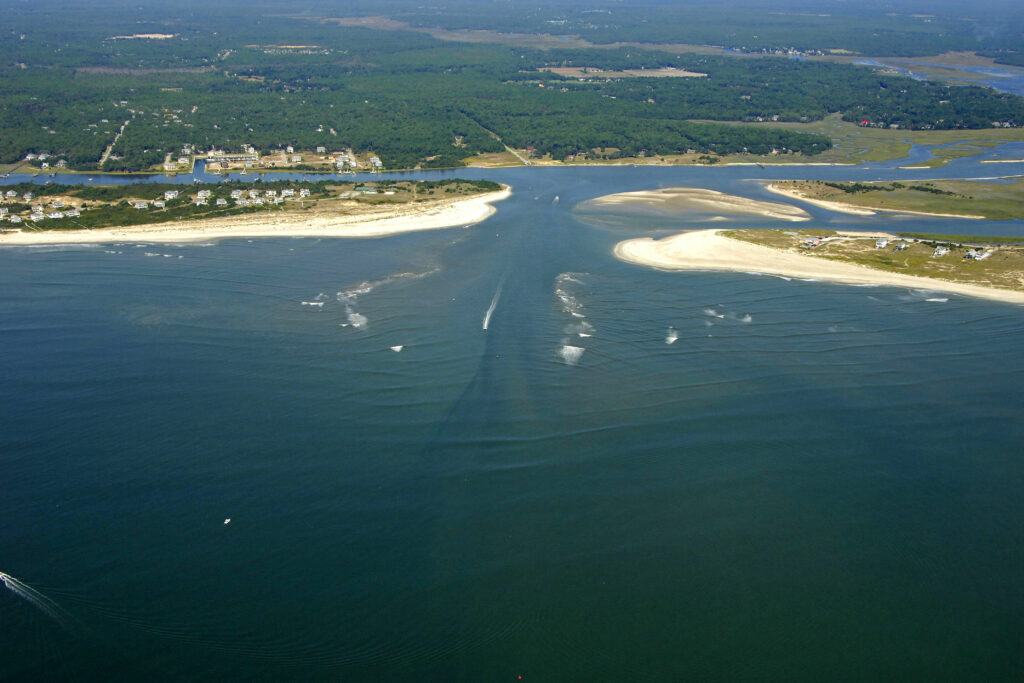
Update –
Christy reviewed the report on the history of towns dredging activity and the future plans for dredging the inlet. She emphasized that Holden Beach has and continues to do a lot of the work to have the inlet dredging funded. The Town already has funds budgeted to cover this spring’s dredging and we stand ready to pass those funds along.
Army Corps to dredge Lockwood Folly Inlet
The United States Army Corps of Engineers is set to dredge the Lockwood Folly Inlet navigational channel this summer, and though the bulk of the project cost will be covered by state grant funds a local match is required from Brunswick County and the towns of Holden Beach and Oak Island. The $744,500 dredging project will dredge the navigational channel of the Lockwood Folly Inlet, located between the east end of Holden Beach and the west end of Oak Island, to a depth of eight-feet and be done by the Corps’ sidecast dredge Merritt, as that is the only U.S. Army Corps of Engineers (USACE) dredge currently available. The bulk of the project cost — $558,375 or 75% — will be covered by the NC Department of Environmental Quality (DEQ) Shallow Draft Navigation Channel Dredging and Aquatic Weed Fund, with the remaining 25%, or $186,125, required to be split between the county and the two towns. During the Brunswick County Board of Commissioners May 19 meeting, Assistant County Manager Niel Brooks said with previous similar projects, Brunswick County covers 50% of the local match, totaling in this case $93,062.50, with the remaining 50% of the local match to be split between local jurisdictions, leaving Holden Beach and Oak Island to cover $46,531.25 each. Brooks said the town of Holden Beach said it is on board with the project, but noted the town of Oak Island had not confirmed its willingness to provide a local match. “But in order to keep this project moving forward and meeting the schedule that the Corps has that the dredge is available, staff would recommend that we go ahead and have you authorize the county to pay the entire match, $186,125, and then that we get look to get the reimbursement from the two jurisdictions.” Commissioner Randy Thompson asked staff were the funds are coming from. In response, County Finance Director Aaron Smith said, “We have a reserve that we set aside for these type of projects and we’ve got more than enough available to cover what he’s proposed.” The county commissioners voted unanimously to approve allocating the funding, though some expressed concerns with undertaking the project will a sidecast dredge, which does not place any dredged sand onto beaches but instead scoops material and ejects it off either side back into the inlet. “It’ll shoal back in within two weeks,” Chairman Mike Forte said. “Well, hopefully not but, yeah — it’s better than nothing,” Commissioner Marty Cooke said in response, to which Forte agreed. Following the county’s May 19 approval, Holden Beach Interim Town Manager Christy Ferguson during its May 20 Board of Commissioners meeting confirmed the town of Holden Beach’s intention to provide its share of funds for the project. The town had already budgeted funding for dredging Lockwood Folly this fiscal year, she said. “We do stand ready to pass those funds along to the county,” Ferguson said, “and we’ll be doing that for our part.” As noted above, Brooks during the May 19 meeting said the town of Oak Island has not provided the county with a “firm yes” regarding the project. Oak Island just completed the first round of its own dredging of the Lockwood Folly, separate from the Corps’ dredging, town leaders said during the May 21 Brunswick County Shoreline Protection Consortium meeting. Oak Island Mayor Elizabeth White during the recent consortium meeting expressed concerns about USACE’s plans to dredge the Lockwood Folly Inlet navigational channel with a sidecast dredge. “A sidecaster doesn’t put sand where we need it,” she said. “So, the next dredge that they’re doing at Lockwood Folly casting the sand off to the side, that sand could go to the beach.” Also, during the recently Shoreline Protection Consortium, Commissioner Cooke said the county has been considering purchasing a dredge. He said the county would look for something similar to the Miss Katie dredge, a hopper dredge — which collects dredged material and transport it to another location.
Read more » click here
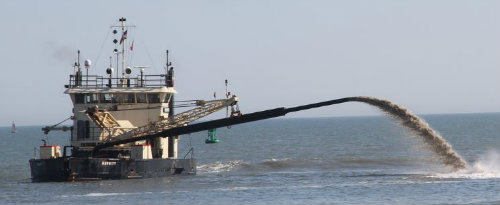
12. Discussion and Possible Action on ADA Completion Agreement – Inspections Director Evans (Interim Town Manager Ferguson)
Agenda Packet – pages 63 – 68
ISSUE/ACTION REQUESTED:
Approval of the ADA completion agreement
BACKGROUND/PURPOSE OF REQUEST:
The Town has completed the requirements for the ADA agreement and would like to show that we have completed the work in good faith, while viewing the mediation as a partnership with parties involved for completion.
FINAL COMMENTS – Martha S Myers / Equal Access Consulting
Throughout this process, and as directed by the Agreement, Town staff has met with me quarterly to review their progress. On Wednesday, March 12, we met for our final quarterly meeting. We reviewed each component of the Agreement and determined that a few relatively minor issues were still outstanding. Those items were specifically communicated via email to Town staff. As of May 20, 2025, all items listed in the Agreement are now complete.
The work the Town has engaged in over the past two years has greatly improved beach accessibility at Holden Beach. The Town, thanks in large part to the work of ADA Coordinator/Building Inspector Tim Evans, has exceeded what was required by the Agreement. What has been accomplished is something for which the Town of Holden Beach should truly be proud. Additionally, and under Mr. Evans leadership, the Town is about to embark on an ADA Self-Assessment, something that is not part of the Agreement, but will provide a roadmap of sorts for current and future ADA improvements.
One piece of the self-assessment that will be of critical importance is ensuring there is a specific plan in place for fully maintaining all ADA components. Something cannot be partially ADA accessible, it either is, or is not. Probably the greatest area in which this will be important is with the blue access mats. The mats will get covered with sand, and to remain accessible there MUST be a plan for monitoring and cleaning them on a regular basis. And that plan must be followed. Anything less may put the Town at risk for further complaints being filed. One suggestion provided to Town officials is that they consider organizing teams of volunteers to help with mat sweeping/cleaning, with oversight by the Public Works Department or other Town staff. Several individuals and civic organizations have already expressed a willingness to assist the Town with mat cleaning. It would be great if, before the busy season begins, the Town would consider holding an open meeting to discuss the feasibility and logistics of setting up volunteer teams to assist with this important task.
Completion of this Agreement has neither been easy for anyone involved, without its hurdles, nor inexpensive for the Town of Holden Beach, but if it has improved access for even just one person, it has been worthwhile. I venture to say that more than one person will benefit from the improvements and the increased awareness of the importance of accessibility. Hopefully, it has also shown how individuals, organizations, and government can come together to work for the greater good of everyone. The cooperation of all parties involved has been greatly appreciated.
Update –
The Town has completed all of the requirements in the ADA mediation agreement. Martha Myers, Equal Access Consulting joined Inspections Director Evans to review what was accomplished. The Town not only met but exceeded the requirements of the agreement. The Board acknowledged the improvements that were made and accepted the ADA Completion Agreement.
A decision was made – Approved unanimously
13. Discussion and Possible Action on Ordinance 25-08, An Ordinance Amending the Holden Beach Code of Ordinances, Chapter 72: Parking Regulations – Town Clerk Finnell (Interim Town Manager Ferguson)
Agenda Packet – pages 69 – 72
Ordinance 25-08 » click here
ISSUE/ACTION REQUESTED:
Discussion and Possible Action on Proposed Changes to Holden Beach Code of Ordinances, Chapter 72: Parking Regulations
BACKGROUND/PURPOSE OF REQUEST:
An Amendment to the Parking Zone and Area Table of Section 72.03 Parking Authorized by Permit Only is necessary to reflect changes recently made at the pier and east end of the island. Changes are highlighted in the attached ordinance.
Update –
The ordinance updates the Parking Table to reflect recent changes made both at the pier and the east end of the island. A number of other minor corrections to other parking areas were made at the meeting. The motion was made to approve proposed changes as amended.
A decision was made – Approved unanimously
14. Discussion and Possible Action on Ordinance 25-09, An Ordinance Adopting a Supplement to the Holden Beach Code of Ordinances (Supplement 18) – Town Clerk Finnell (Interim Town Manager Ferguson)
Agenda Packet – pages 73 – 75, plus separate packet
Ordinance 25-09 » click here
Supplement » click here
ISSUE/ACTION REQUESTED:
Discussion and Possible Action On Ordinance 25-09, An Ordinance Adopting a Supplement to the Holden Beach Code of Ordinances (Supplement 18)
BACKGROUND/PURPOSE OF REQUEST:
The latest supplement to the Holden Beach Code of Ordinances, along with Ordinance 25-09, which adopts the supplement, are included for your review. The supplement codifies the ordinances the Board approved since the last supplement.
If you approve Ordinance 25-09, please follow the instruction sheet and replace the old pages in your Code books. If you prefer, you could bring me your book and the supplement and I will do it for you.
Update –
Housekeeping item Supplement 18 codifies the changes made since the last supplement was issued.
A decision was made – Approved unanimously
15. Discussion and Possible Selection of a Date to Hold a Public Hearing on the Proposed Budget for Fiscal Year 2025 – 2026 – Town Clerk Finnell (Interim Town Manager Ferguson)
Agenda Packet – page 76
Budget Message » click here
ISSUE/ACTION REQUESTED:
Discussion and Possible Selection of a Date to Hold a Public Hearing on the Proposed Budget for Fiscal Year 2025 – 2026
BACKGROUND/PURPOSE OF REQUEST:
The Board is required to hold a public hearing prior to adopting the budget. Staff recommends scheduling the hearing for June 17th at 5:00 p.m. (at the start of the regular meeting).
THB Newsletter (05/27/25)
TOWN OF HOLDEN BEACH OFFICIAL NOTICE
FY – 2025/2026 BUDGET
June 17, 2025, 5:00 p.m. or shortly thereafter
Notice is hereby given that the Budget proposed for the Fiscal Year, beginning July 1, 2025 and ending June 30, 2026, has been submitted to the Board of Commissioners and is available for public inspection online. Click here to view the Budget Message.
A public hearing on the proposed Budget will be held by the Board of Commissioners at 5:00 p.m. or shortly thereafter on Tuesday, June 17, 2025 in the Holden Beach Town Hall Public Assembly, 110 Rothschild Street. Oral and written comments will be received at the hearing from any interested person.
The Town of Holden Beach does not discriminate on the basis of disability. If you need an auxiliary aid or service or other accommodation in order to attend or fully participate at this meeting, please contact the Town Hall as far in advance of the meeting as is possible so that your request may be considered.
Update –
The Board is required to hold a Public Hearing prior to adopting the budget. A public hearing on the budget for fiscal year 2025 – 2026 was scheduled for June 17th at 5:00 p.m. prior to the BOC’s Regular Meeting.
A decision was made – Approved unanimously
16. Consideration and Possible Action to Approve Proposals for Harris Local Government Print and Mail Services – Finance Director McRainey (Interim Town Manager Ferguson)
Agenda Packet – pages 77 – 89
Harris Local Government » click here
ISSUE/ ACTION REQUESTED:
Consideration and possible action to approve contract for Harris Local Government print and mail services.
BACKGROUND/PURPOSE OF REQUEST:
Harris Local Government has an option to produce and mail our tax/water bills which will produce more timely billing and solve a long standing issue we have had with our folding machine.
TOWN MANAGER’S RECOMMENDATION:
Finance Officer suggests that an analysis of cost difference will not impact the budget.
Suggest approval
Harris Local Government is pleased to provide Town of Holden Beach NC with the following proposal for Managed Print and Mail Services.
Our recommended solution includes everything needed to produce your Tax Bills. The pricing includes processing, printing, folding, inserting, USPS CASS & NCOA services, and First-Class mailing. Postage is passed along at cost and Is not required to be paid in advance.
Update –
The Board approved the proposals from Harris Local Government for print and mail services for both the town’s water and tax bills.
A decision was made – Approved unanimously

Budget Calendar –
Local governments must balance their budget
The Town Manager’s proposed budget is due by June 1st
Commissioners must adopt budget no later than June 30th for the next fiscal year
Adopting the annual budget is a primary responsibility of the Board
17. Consideration and Possible Action to Approve Contract for LCC Telecom Services – Finance Director McRainey (Interim Town Manager Ferguson)
Agenda Packet – pages 90 – 109
LCC Telecom Services » click here
ISSUE/ACTION REQUESTED:
Consideration and possible action to approve contract tor LCC Telecom services.
BACKGROUND/PURPOSE OF REQUEST:
LCC telecom services currently has a lease with us and this contract is to renew the lease for another 5 years.
Tenant (US Cellular) shall pay Rent to Landlord in the amount of One Thousand Nine Hundred and Fifty ($1.950.00) dollars per month
Editor’s Note –
We currently have an income of over one hundred thousand ($100,000) annually
As of June 2025, we were getting the following:
Company Yearly Rent
Verizon $45,377
AT&T $29,028
US Cellular $23,400
T-Mobile $26,664
Dish Wireless $18,000 NO LONGER LEASING
TOTAL $124,469
Update –
The lease for LCC telecom services to occupy space on the water tower was renewed for an additional five years. The yearly rate is $23,400, which is a 7.7% increase in the contract with an additional annual increase of 5.0%.
A decision was made – Approved unanimously
General Comments –
BOC’s Meeting
The Board of Commissioners’ next Regular Meeting is scheduled on the third Tuesday of the month, June 17th

It’s not like they don’t have anything to work on …
The following eight (8) items are what’s In the Works/Loose Ends queue:
- Accommodation/Occupancy Tax Compliance
- Audio/Video Broadcast
- Block Q Project/Carolina Avenue
- Dog Park
- Fire Station Project
- Pavilion Replacement
- Pier Properties Project
- Rights-of-Way
- Accommodation/Occupancy Tax Compliance
The definition of loose ends is a fragment of unfinished business or a detail that is not yet settled or explained, which is the current status of these items. All of these items were started and then put on hold, and they were never put back in the queue. This Board needs to continue working on them and move these items to closure.


.
Lost in the Sauce –
.
From 2024
Working Together
Discussion and Possible Commitment from the Town’s Leadership on Working Together for the Betterment of the Town – Mayor Holden and Commissioner Dyer
Agenda Packet – page 110
ISSUE/ACTION REQUESTED:
Discussion and Possible Commitment from the Town’s Leadership on Working Together for the Betterment of the Town
BACKGROUND/PURPOSE OF REQUEST:
There have been concerns from the public that call for the elected officials to work more in harmony.
Update –
Based on who submitted this agenda item, it seems to me that their intent was to put the blame for not working together on the three (3) new Board members. Mayor Holden got on his soap box to give an angry rant. Alan stated that he is deeply concerned with the way things are headed. He then said that we all need to try and work together for what is best for the Holden Beach community. Just so you know, Mayor Pro Tem Myers and Commissioner Thomas are on the HBPOA Board. Not to put too fine a point on it, Alan is on the Board of Trustees of the Chapel, the Chapel just revoked the privileges of the HBPOA to use their facility. Does that sound like they are trying to work together to you? He then insinuated that their actions have negatively impacted home sales and rentals. This is just after the Inspections Director reported that this was the busiest month ever for his Planning & Inspections Department. Also, the draft budget that was submitted to the Board has occupancy tax being higher than last year. In my opinion his remarks are just BALDERDASH. Most of the property owners don’t even follow what’s going on here and we are supposed to believe that people that don’t live here do. Mayor Pro Tem Myers agreed at times it’s been embarrassing and that we all share responsibility. Tom said that we need to do something. He suggested that they participate in the League of Municipalities “Commit to Civility” Program which is focused exactly on this issue. In other words, he flipped the script by offering to take a civility course. Three (3) Board members (Tom, Tracy, and Rick) were willing and able and immediately committed to taking the course. The other Board members were unable or unwilling to commit. Alan’s ploy backfired. Despite the agenda item being about working together the discussion unraveled twice. Alan seemed unwilling to accept that it was inappropriate to discuss church business in the Mayor’s Desk newsletter that is sent from the Town. It is a separation of Church and State issue. Then Alan, Page and Rick went down the rabbit hole again regarding conflict of interest. Our Town attorney needed to once again explain to them what constitutes a conflict of interest. After some additional discussion they were able to reach agreement by consensus that they will look into participating in the Commit to Civility program.
League of Municipalities “Commit to Civility” Program
Connect. Respect. Solutions.
“Civility is claiming and caring for one’s identity, needs, and beliefs without degrading someone else’s in the process.”
Program Purpose
NCLM’s Commit to Civility program promotes civility in local government and recognizes those governing boards that dedicate themselves to this approach. It engages and challenges municipal officials to embrace civility throughout the course of their work within their communities. This program equips leaders with the information and skills needed to maintain composure and move through emotionally charged situations with a respectful and solutions-oriented approach.
The objectives are to understand that:
- Civility is about disagreeing without disrespect, seeking common ground as a starting point for dialogue about differences, listening past one’s preconceptions, and teaching others to do the same. Civility is the hard work of staying present even with those with deep-rooted and fierce disagreements.
- Civility is inherently political, not only because it’s a prerequisite for civic action, but because it’s about negotiating interpersonal power such that everyone’s voice is heard.
For more information » click here

That’s rich, it took a lot of chutzpah for them to submit this agenda item. I find it ironic that the two persons that submitted this agenda item were the people who were hostile at the meeting. They are the ones that are not being civil, respectful, out of control, and have not maintained proper decorum during the meetings. They are the ones who complained about everything, no matter how picayune. Board members need to treat one another with civility, dignity, and respect despite their differences. In my opinion, Tom, Tracy, and Rick have been committed to do what is best for all the island property owners and the Town of Holden Beach from the day they registered to run for office. It is the other Board members that have not. In my opinion this agenda item is an insincere act meant to deceive the public, it was not submitted in good faith. They are being total hypocrites.

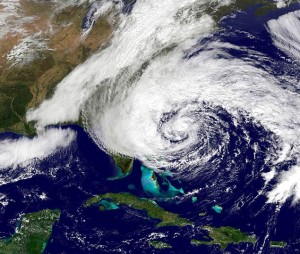
Hurricane Season
For more information » click here.
Be prepared – have a plan!
No matter what a storm outlook is for a given year,
vigilance and preparedness is urged.
Prepare now for hurricanes, Trump warns.
Here’s what NC residents, others should do.
NOAA says the best time to prepare for oncoming storms is now – well before the official start of Hurricane season.
National Hurricane Preparedness Week was designated by President Donald Trump on May 5, a reminder that deadly hurricanes will soon be brewing. The Atlantic Hurricane season starts June 1. Presidents dating back to at least George W. Bush have issued proclamations about the preparedness week tradition, which warns of danger ahead. According to Trump’s latest proclamation, this is “a time to raise awareness about the dangers of these storms and encourage citizens in coastal areas and inland communities to be vigilant in emergency planning and preparation.” Yet another active year is predicted, with as many as 17 named storms possible, according to a forecast from Colorado State University experts. The National Oceanic and Atmospheric Administration (NOAA) says the best time to prepare for oncoming storms is now – well before the official start of the season. “Take action TODAY to be better prepared for when the worst happens. Understand your risk from hurricanes and begin pre-season preparations now.” Delaying potentially life-saving preparations could mean waiting until it’s too late. “Get your disaster supplies while the shelves are still stocked, and get that insurance checkup early, as flood insurance requires a 30-day waiting period,” NOAA recommends. NC braces for hurricane season North Carolina is No. 2. That’s not good when it comes to hurricane season predictions
Here are five things you should do now:
1. Develop an evacuation plan
If you are at risk from hurricanes, you need an evacuation plan. Now is the time to begin planning where you would go and how you would get there. You do not need to travel hundreds of miles. Your destination could be a friend or relative who lives in a well-built home outside flood prone areas. Plan several routes and be sure to account for your pets.
2. Assemble disaster supplies
Whether you’re evacuating or sheltering-in-place, you’re going to need supplies not just to get through the storm but for the potentially lengthy aftermath, NOAA said. Have enough non-perishable food, water and medicine to last each person in your family a minimum of three days (store a longer than 3-day supply of water, if possible). Electricity and water could be out for weeks. You’ll need extra cash, a battery-powered radio and flashlights. You may need a portable crank or solar-powered USB charger for your cell phones. And lastly, don’t forget your pets!
3. Get an insurance checkup and document your possessions
Contact your insurance company or agent now and ask for an insurance check-up to make sure you have enough insurance to repair or even replace your home and/or belongings. Remember, home and renters insurance doesn’t cover flooding, so you’ll need a separate policy for it. Flood insurance is available through your company, agent, or the National Flood Insurance Program. Act now, as flood insurance requires a 30-day waiting period. Also take the time before hurricane season begins to document your possessions: photos, serial numbers, or anything else that you may need to provide your insurance company when filing a claim.
4. Create a family communication plan
NOAA said to take the time now to write down your hurricane plan, and share it with your family. Determine family meeting places, and make sure to include an out-of-town location in case of evacuation. Write down on paper a list of emergency contacts, and make sure to include utilities and other critical services – remember, the Internet may not be accessible during or after a storm.
5. Strengthen your home
Now is the time to improve your home’s ability to withstand hurricane impacts. Trim trees; install storm shutters, accordion shutters, and/or impact glass; seal outside wall openings. Remember, the garage door is the most vulnerable part of the home, so it must be able to withstand hurricane-force winds. Many retrofits are not as costly or time consuming as you may think, NOAA said. If you’re a renter, work with your landlord now to prepare for a storm. And remember – now is the time to purchase the proper plywood, steel or aluminum panels to have on hand if you need to board up the windows and doors ahead of an approaching storm.
Read more » click here
Will hurricane season start early this year? Recent trends suggest yes
Atlantic hurricane season officially runs from June 1 through November 30, but Mother Nature does not always follow that calendar – and it looks like this year could also defy the timeline. In recent days, some forecasting models have hinted at the possibility of a head start to the 2025 season, showing the potential for storm development—specifically in the western Caribbean where conditions appear more favorable. In seven of the last 10 years, at least one named storm has formed before June 1. For comparison, there were only three years with early named storms from 2005 to 2014. After six years of storms forming early, the National Hurricane Center decided in 2021 to start issuing tropical weather outlooks beginning May 15—two weeks earlier than previously done. Some years have even seen multiple prior to the season’s start. There were two ahead-of-schedule named storms in 2012, 2016 and 2020 – and 2020 nearly had three, with Tropical Storm Cristobal forming on June 1. When a hurricane season starts early, it doesn’t necessarily mean there will be more storms. But there could be cause for concern this year, as the season’s poised to be a busy one, with an above-average 17 named storms predicted, according to hurricane researchers at Colorado State University. Early activity has largely been thanks to unusually warm waters in the Atlantic, Caribbean or Gulf basins during the spring. It’s a trend meteorologists and climate scientists have been watching for years. As our climate continues to warm, so do the oceans, which absorb 90% of the world’s surplus heat. That can have a ripple effect on tropical systems around the globe. Warm water acts as fuel for hurricanes, providing heat and moisture that rises into the storm, strengthening it. The hotter the water, the more energy available to power the hurricane’s growth. And a warmer atmosphere can hold more moisture, which in turn means more fuel for the tropical systems to pull from. Sea surface temperatures are already incredibly warm for this time of year, especially in the Gulf and southern Caribbean. This means any system passing through those regions could take advantage if other atmospheric conditions are favorable and develop into an early named storm. In the Caribbean, water temperatures are among some of the warmest on record for early May, and more in line with temperatures found in late June and July. The Eastern Pacific hurricane season has also seen some preseason activity in recent years, though not as frequent as the Atlantic. Part of the reason is because the Eastern Pacific season begins two weeks earlier, on May 15. In the last 20 years, the Eastern Pacific basin has only had three named tropical systems prior to that date—Andreas in 2021, Adrian in 2017 and Aletta in 2012. Another reason is the relationship between the two basins and storm formation. Generally, when the Atlantic basin is more active, the Pacific is less so due to a number of factors, including El Niño and La Niña.
Read more » click here
NOAA 2025 Atlantic Hurricane Season Outlook
The 2025 North Atlantic Hurricane Season Outlook is an official product of the National Oceanic and Atmospheric Administration (NOAA) Climate Prediction Center (CPC). The outlook is produced in collaboration with hurricane experts from NOAA’s National Hurricane Center (NHC) and Atlantic Oceanographic and Meteorological Laboratory (AOML). The Atlantic hurricane region includes the North Atlantic Ocean, Caribbean Sea, and Gulf of America.
Interpretation of NOAA’s Atlantic Hurricane Season Outlook:
This outlook is a general guide to the expected overall activity during the upcoming hurricane season. It is not a seasonal hurricane landfall forecast, and it does not predict levels of activity for any particular location.
Preparedness:
Hurricane-related disasters can occur during any season, even for years with low overall activity. It only takes one hurricane (or tropical storm) to cause a disaster. It is crucial that residents, businesses, and government agencies of coastal and near-coastal regions prepare for every hurricane season regardless of this, or any other, seasonal outlook. The Federal Emergency Management Agency (FEMA) through Ready.gov (English) and www.listo.gov (Spanish), the NHC, the Small Business Administration, and the American Red Cross all provide important hurricane preparedness information on their web sites.
NOAA does not make seasonal hurricane landfall predictions:
NOAA does not make seasonal hurricane landfall predictions. Hurricane landfalls are largely determined by the weather patterns in place as the hurricane approaches, and those patterns are usually only predictable when the storm is within several days of making landfall.
Preparedness for tropical storm and hurricane landfalls:
It only takes one storm hitting an area to cause a disaster, regardless of the overall activity for the season. Therefore, residents, businesses, and government agencies of coastal and near-coastal regions should prepare every hurricane season regardless of this, or any other, seasonal outlook.
Nature of this outlook and the “likely” ranges of activity:
This outlook is probabilistic, meaning the stated “likely” ranges of activity have a certain likelihood of occurring. The seasonal activity is expected to fall within these ranges in 7 out of 10 seasons with similar conditions and uncertainties to those expected this year. They do not represent the total possible ranges of activity seen in past similar years. Years with similar levels of activity can have dramatically different impacts.
This outlook is based on analyses of 1) predictions of large-scale factors known to influence seasonal hurricane activity, and 2) long-term forecast models that directly predict seasonal hurricane activity. The outlook also takes into account uncertainties inherent in such outlooks.
Sources of uncertainty in the seasonal outlooks:
- Predicting the El Niño-Southern Oscillation (ENSO) phases, which include El Niño and La Niña events and ENSO-neutral and their impacts on North Atlantic basin hurricane activity, is an ongoing scientific challenge facing scientists today. Such forecasts made during the spring generally have limited skill.
- Many combinations of named storms (tropical and subtropical storms), hurricanes, and major hurricanes can occur for the same general set of conditions. For example, one cannot know with certainty whether a given signal may be associated with several shorter-lived storms or fewer longer-lived storms with greater intensity.
- Model predictions of sea-surface temperatures (SSTs), vertical wind shear, moisture, atmospheric stability, and other factors known to influence overall seasonal hurricane activity have limited skill this far in advance of the peak months (August-October) of the hurricane season.
- Shorter-term weather patterns that are unpredictable on seasonal time scales can sometimes develop and last for weeks or months, possibly affecting seasonal hurricane activity.
2025 North Atlantic Hurricane Season Outlook Summary
a) Predicted Activity
NOAA’s outlook for the 2025 Atlantic Hurricane Season indicates that an above-normal season is most likely, with a moderate probability that the season could be near-normal and lower odds for a below-normal season. The outlook calls for a 60% chance of an above-normal season, along with a 30% chance for a near-normal season and only a 10% chance for a below-normal season. See NOAA definitions (https://www.cpc.ncep.noaa.gov/products/outlooks/Background.html) of above-, near-, and below-normal seasons.
The 2025 outlook calls for a 70% probability for each of the following ranges of activity during the 2025 hurricane season, which officially runs from June 1st through November 30th:
- 13-19 Named Storms
- 6-10 Hurricanes
- 3-5 Major Hurricanes
- Accumulated Cyclone Energy (ACE) range of 95 to 180% of the median
The seasonal activity is expected to fall within these ranges in 70% of seasons with similar conditions and uncertainties to those expected this year. These ranges do not represent the total possible ranges of activity seen in past similar years. These expected ranges are centered above the 1991-2020 seasonal averages of 14 named storms, 7 hurricanes, and 3 major hurricanes. Most of the predicted activity is likely to occur during August-September-October (ASO), the peak months of the hurricane season.
The North Atlantic hurricane season officially runs from June 1st through November 30th. This outlook will be updated in early August to coincide with the onset of the peak months of the season (ASO).
b) Reasoning behind the outlook
This 2025 seasonal hurricane outlook reflects the expectation of factors during ASO that have historically produced active Atlantic hurricane seasons, though some were not as active, resulting in a range of activity. The main atmospheric and oceanic factors for this outlook are:
- The set of conditions that have produced the ongoing high-activity era for Atlantic hurricanes which began in 1995 are likely to continue in 2025. These conditions include warmer sea-surface temperatures (SSTs) and weaker trade winds in the Atlantic hurricane Main Development Region (MDR), along with weaker vertical wind shear, and a conducive West African monsoon. The oceanic component of these conditions is often referred to as the Atlantic Multidecadal Oscillation (AMO), while the ocean/atmosphere combined system is sometimes referred to as Atlantic Multidecadal Variability (AMV). The MDR spans the tropical North Atlantic Ocean and Caribbean Sea. Currently observed SSTs in the MDR are similar to those normally observed in mid-June. Saharan Air Layer outbreaks typically mitigate some of the activity early in the season, but it is not known if this will significantly affect activity during the peak months. Tradewinds are weaker than normal which contributes to lower vertical wind shear. The upper-level circulation with the West African Monsoon is near average, though monsoon rainfall is predicted to be shifted northward and be potentially above-average for the entire season.
- The set of conditions that have produced the ongoing high-activity era for Atlantic hurricanes which began in 1995 are likely to continue in 2025. These conditions include warmer sea-surface temperatures (SSTs) and weaker trade winds in the Atlantic hurricane Main Development Region (MDR), along with weaker vertical wind shear, and a conducive West African monsoon. The oceanic component of these conditions is often referred to as the Atlantic Multidecadal Oscillation (AMO), while the ocean/atmosphere combined system is sometimes referred to as Atlantic Multidecadal Variability (AMV). The MDR spans the tropical North Atlantic Ocean and Caribbean Sea. Currently observed SSTs in the MDR are similar to those normally observed in mid-June. Saharan Air Layer outbreaks typically mitigate some of the activity early in the season, but it is not known if this will significantly affect activity during the peak months. Tradewinds are weaker than normal which contributes to lower vertical wind shear. The upper-level circulation with the West African Monsoon is near average, though monsoon rainfall is predicted to be shifted northward and be potentially above-average for the entire season.
- The most recent forecast from the NOAA Climate Prediction Center indicates ENSO-neutral conditions are likely through the hurricane season. During the peak months (ASO), the odds are highest for ENSO-neutral (54%), with moderate probabilities for La Niña (33%), and low chances of an El Niño event (13%) occurring. During a high-activity era, ENSO-neutral is typically associated with above-average levels of hurricane activity. La Niña events tend to reinforce those high-activity era conditions and further increase the likelihood of an above-normal hurricane season, while most of the inactive seasons are associated with El Niño events.
Read more » click here
NOAA predicts above-normal 2025 Atlantic hurricane season
Above-average Atlantic Ocean temperatures set the stage
NOAA’s outlook for the 2025 Atlantic hurricane season, which goes from June 1 to November 30, predicts a 30% chance of a near-normal season, a 60% chance of an above-normal season, and a 10% chance of a below-normal season. The agency is forecasting a range of 13 to 19 total named storms (winds of 39 mph or higher). Of those, 6-10 are forecast to become hurricanes (winds of 74 mph or higher), including 3-5 major hurricanes (category 3, 4 or 5; with winds of 111 mph or higher). NOAA has a 70% confidence in these ranges. “NOAA and the National Weather Service are using the most advanced weather models and cutting-edge hurricane tracking systems to provide Americans with real-time storm forecasts and warnings,” said Commerce Secretary Howard Lutnick. “With these models and forecasting tools, we have never been more prepared for hurricane season.” “As we witnessed last year with significant inland flooding from hurricanes Helene and Debby, the impacts of hurricanes can reach far beyond coastal communities,” said Acting NOAA Administrator Laura Grimm. “NOAA is critical for the delivery of early and accurate forecasts and warnings, and provides the scientific expertise needed to save lives and property.”
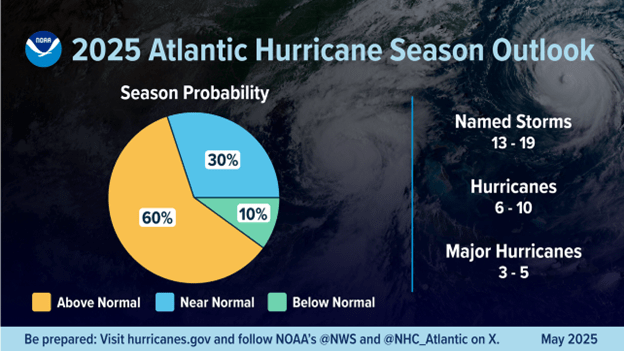 Factors influencing NOAA’s predictions
Factors influencing NOAA’s predictions
The season is expected to be above normal – due to a confluence of factors, including continued ENSO-neutral conditions, warmer than average ocean temperatures, forecasts for weak wind shear, and the potential for higher activity from the West African Monsoon, a primary starting point for Atlantic hurricanes. All of these elements tend to favor tropical storm formation. The high activity era continues in the Atlantic Basin, featuring high-heat content in the ocean and reduced trade winds. The higher-heat content provides more energy to fuel storm development, while weaker winds allow the storms to develop without disruption. This hurricane season also features the potential for a northward shift of the West African monsoon, producing tropical waves that seed some of the strongest and most long-lived Atlantic storms. “In my 30 years at the National Weather Service, we’ve never had more advanced models and warning systems in place to monitor the weather,” said NOAA’s National Weather Service Director Ken Graham. “This outlook is a call to action: be prepared. Take proactive steps now to make a plan and gather supplies to ensure you’re ready before a storm threatens.”
Improved hurricane analysis and forecasts in store for 2025
NOAA will improve its forecast communications, decision support, and storm recovery efforts this season. These include:
- NOAA’s model, the Hurricane Analysis and Forecast System, will undergo an upgrade that is expected to result in another 5% improvement of tracking and intensity forecasts that will help forecasters provide more accurate watches and warnings.
- NOAA’s National Hurricane Center (NHC) and Central Pacific Hurricane Center will be able to issue tropical cyclone advisory products up to 72 hours before the arrival of storm surge or tropical-storm-force winds on land, giving communities more time to prepare.
- NOAA’s Climate Prediction Center’s Global Tropical Hazards Outlook, which provides advance notice of potential tropical cyclone risks, has been extended from two weeks to three weeks, to provide additional time for preparation and response.
Enhanced communication products for this season
- NHC will offer Spanish language text products to include the Tropical Weather Outlook, Public Advisories, the Tropical Cyclone Discussion, the Tropical Cyclone Update and Key Messages.
- NHC will again issue an experimental version of the forecast cone graphic that includes a depiction of inland tropical storm and hurricane watches and warnings in effect for the continental U.S. New for this year, the graphic will highlight areas where a hurricane watch and tropical storm warning are simultaneously in effect.
- NHC will provide a rip current risk map when at least one active tropical system is present. The map uses data provided by local National Weather Service forecast offices. Swells from distant hurricanes cause dangerous surf and rip current conditions along the coastline.
Innovative tools for this year
- NOAA National Environmental Satellite, Data, and Information Services (NESDIS), in collaboration with NOAA’s Office of Marine and Aviation Operations and NOAA Research, is deploying a new, experimental electronically scanning radar system called ROARS on NOAA’s P-3 hurricane hunter research aircraft. The system will scan beneath the plane to collect data on the ocean waves and the wind structure of the hurricane.
- NOAA Weather Prediction Center’s experimental Probabilistic Precipitation Portal provides user-friendly access to see the forecast for rain and flash flooding up to three days in advance. In 2024, Hurricane Helene caused more than 30 inches of extreme inland rainfall that was devastating and deadly to communities in North Carolina.
NOAA’s outlook is for overall seasonal activity and is not a landfall forecast. NOAA also issued seasonal hurricane outlooks for the eastern Pacific and central Pacific hurricane basins. NOAA’s Climate Prediction Center will update the 2025 Atlantic seasonal outlook in early August, prior to the historical peak of the season.
Read more » click here
Do you enjoy this newsletter?
Then please forward it to a friend!
Lou’s Views . HBPOIN
. • Gather and disseminate information
. • Identify the issues and determine how they affect you
. • Act as a watchdog
. • Grass roots monthly newsletter since 2008


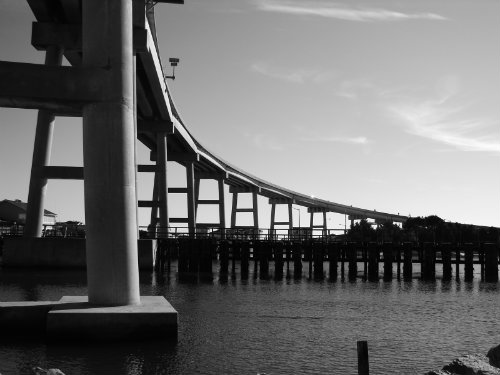









 News from Town of Holden Beach
News from Town of Holden Beach 
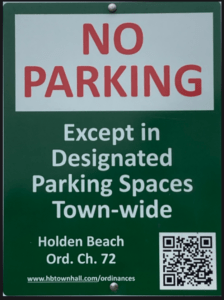



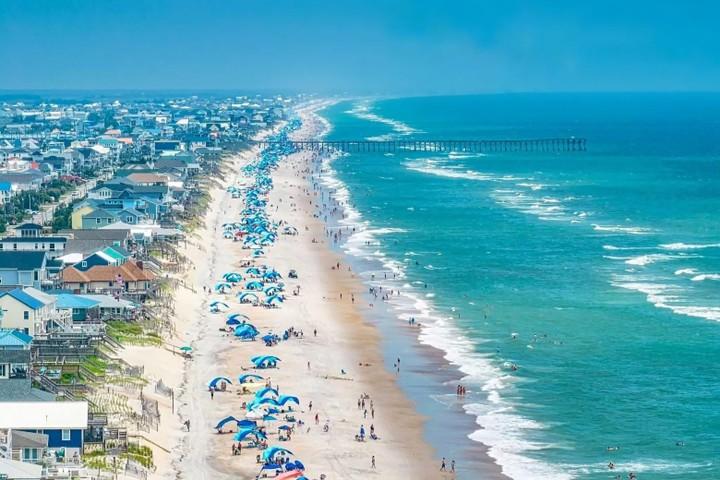
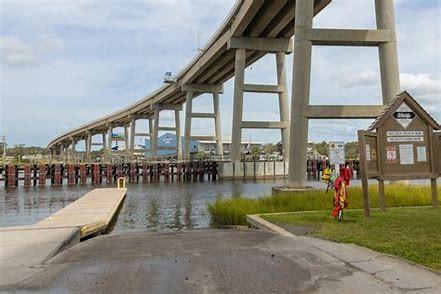
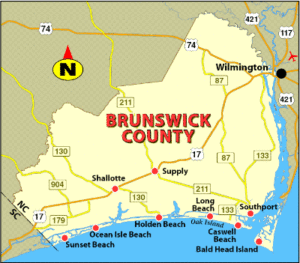





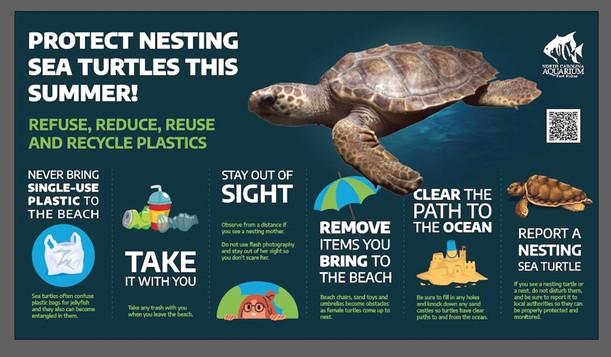


 America is becoming less ready for natural disasters
America is becoming less ready for natural disasters
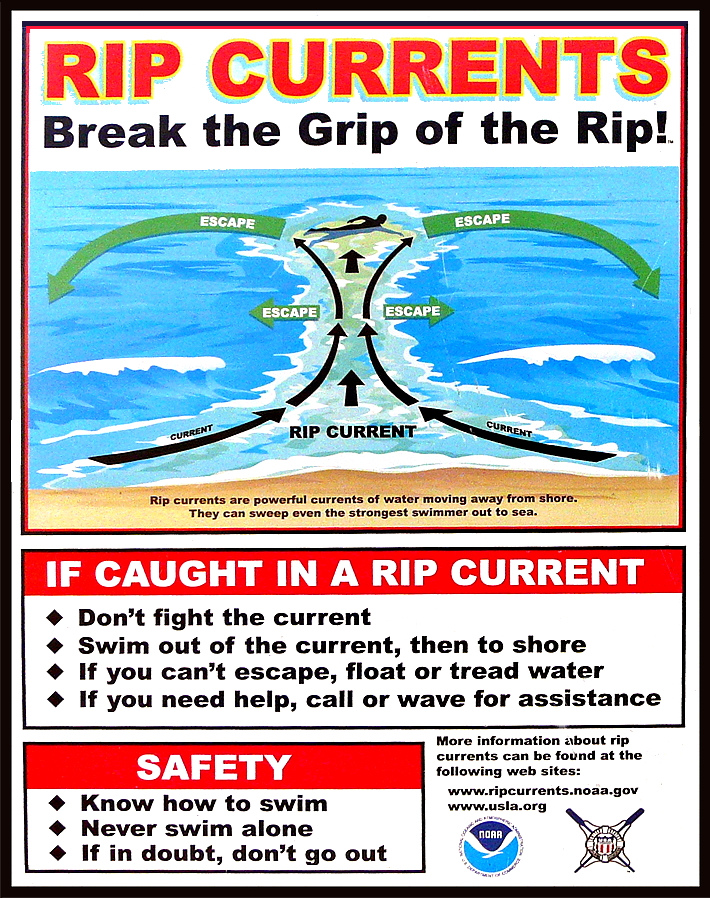



 Hurricane Vehicle Decals
Hurricane Vehicle Decals




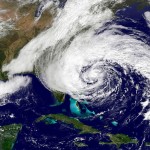
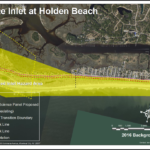
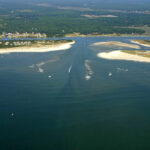







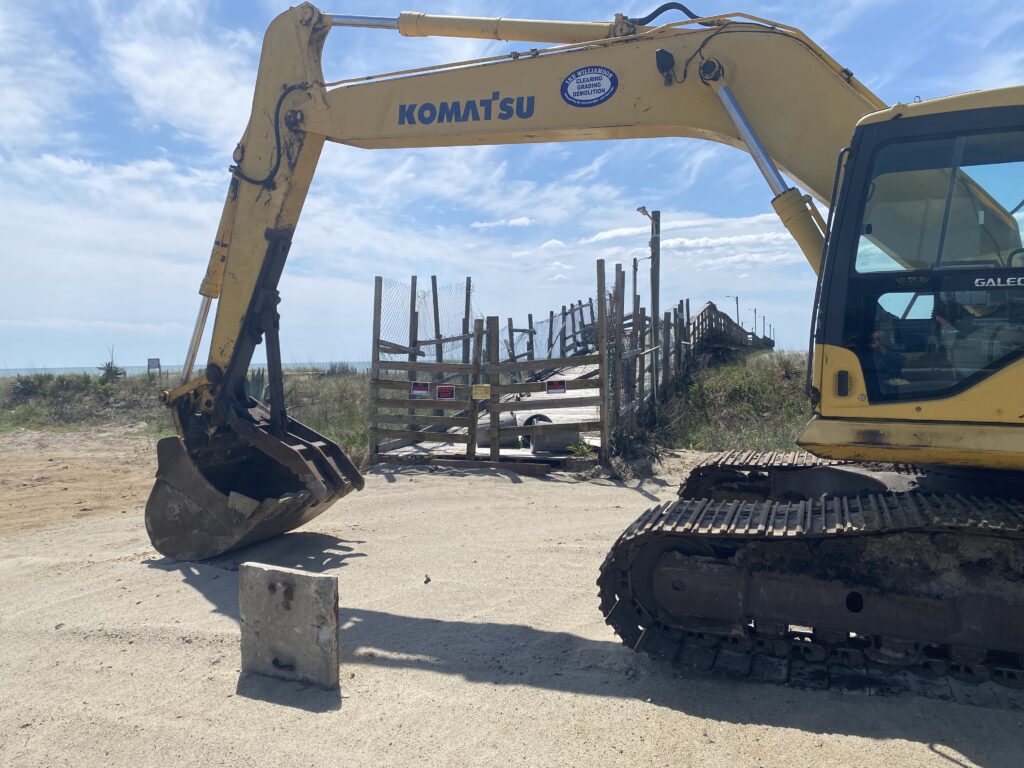

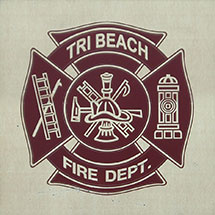
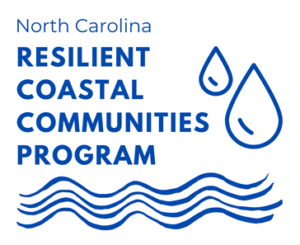
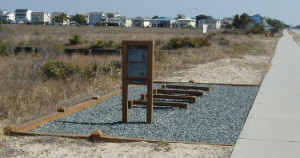










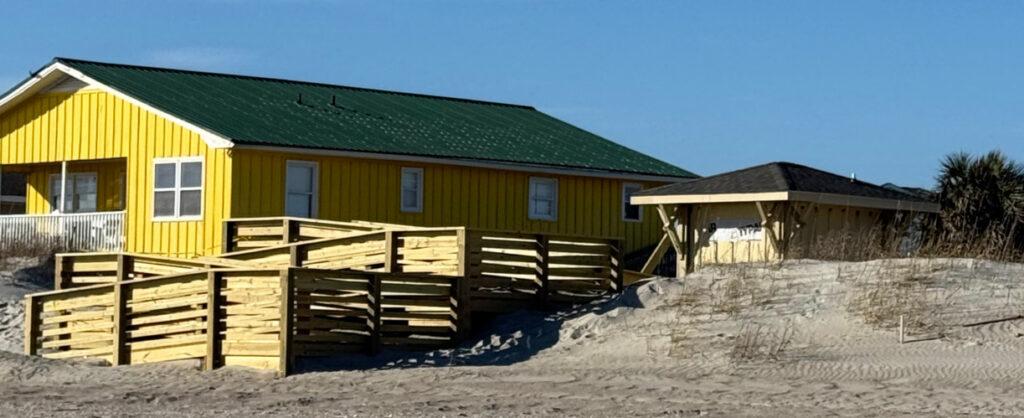 Ave E – Public/Emergency Beach Access and Restroom Facility
Ave E – Public/Emergency Beach Access and Restroom Facility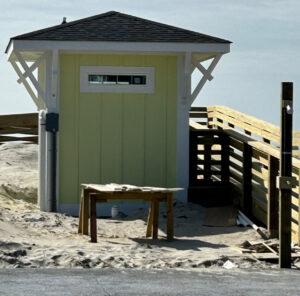

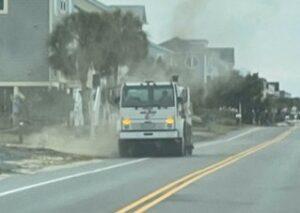 Bike lane maintenance operations have been completed
Bike lane maintenance operations have been completed